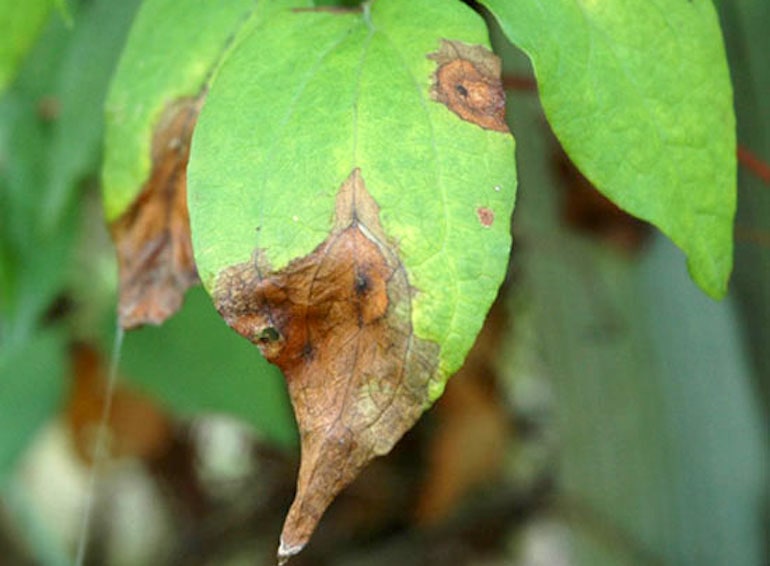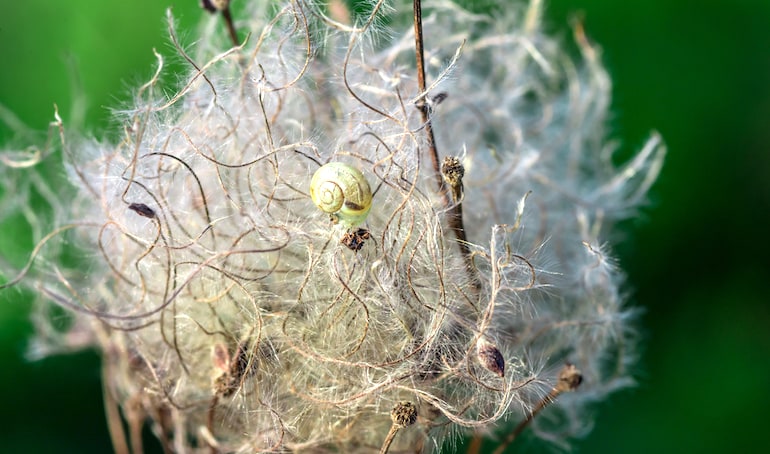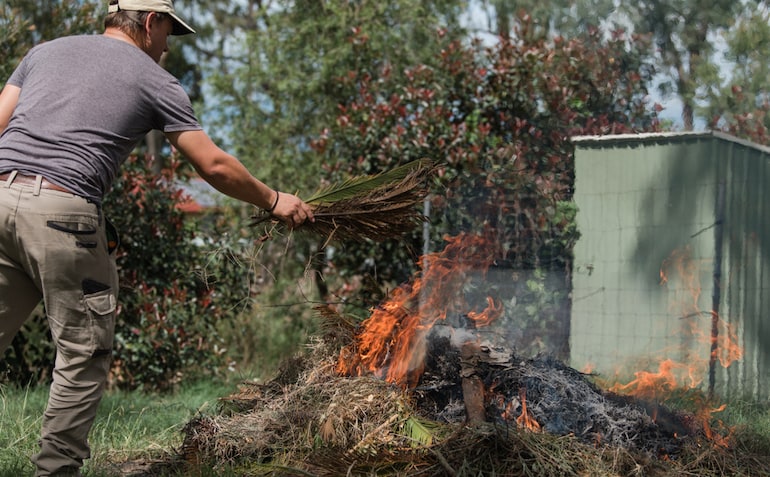Garden diseases - Clematis Wilt

Leaf spot caused by Calophoma clematidina
Image: Nancy Patasky
A fungal disease which makes shoots and leaves wither and die, clematis wilt is actually more of a problem for nurseries and garden centres than home gardeners. It’s relatively rare in the garden, and is often misidentified when the real problem is root stress and plant damage by slugs and snails.
Find out what to do if you think your clematis is suffering from wilt – and learn how to resolve the issue if it’s stress rather than disease that’s damaging your plants.
What is clematis wilt?
Clematis wilt or Calophoma clematidina is a fungus which infects clematis plants. It is spread mainly through infected water and can be transported from location to location via leaf waste and organic matter harbouring the disease.
Affected clematis leaves wither and leaf stalks then turn black. As the disease infects the stem, that too goes black and dies – you can identify newly acquired disease in stems by breaking and examining the tissue which turns black before beginning to shrivel.
In general, large flowered cultivars are most susceptible to the disease, with small bloomed clematis proving much more resistant. If you’re growing a resistant or small bloomed clematis, it’s unlikely that it’s the fungus causing plants to wilt.
If it's not clematis wilt, what is it?

Snails and other molluscs can damage and kill clematis
Image: mszucs/Shutterstock
In the wild, clematis loves shady places and deep, rich soils but because many gardeners grow it in dry, shallow soils, often beside buildings, environmental stress is a big contributor to poor plant health.
If your clematis is showing signs of wilt, it may well be that you need to work on soil quality and moisture content – although clematis don’t like waterlogging, they’re also certain to struggle if their roots to dry out. Try mulching around roots to trap moisture and resist evaporation.
Garden pests like slugs and snails can also stress clematis, so do check for mollusc attack and apply wildlife-friendly deterrents if necessary.
How can I treat clematis wilt?

To minimise reinfection, destroy all contaminated clematis
Image: Tabatha Del Fabbro/Shutterstock
Clematis wilt is untreatable so if your plant does become infected, it’s important to cut back all infected stems to ground level – wilt doesn’t infect the roots, so new shoots will grow through.
Destroy all matter contaminated with wilt, preferably by burning – that way you eliminate the risk of it reinfecting your clematis, or spreading the infection to neighbouring plants. For the same reason, you should always disinfect your secateurs and any other tools and containers you use to strip out infected material.
Look after your clematis by cultivating the soil in which they grow, and doing everything you can to keep the roots moist and healthy, that way your plants will give their best display and are far more likely to resist wilt infection.
For more clematis growing advice and other climbing plants care tips, head to our climbing plants hub page.
Other pages you might like
See all pests & diseases guides
Individual guides
Diseases
- Apple scab
- Bacterial canker
- Blackleg
- Blossom wilt
- Botrytis
- Brown rot
- Downy mildew
- Fungal disease
- Honey fungus
- Leaf scorch
- Leaf spot
- Leek rust
- Lily disease
- Peach leaf curl
- Pear rust
- Phytophthora root rot
- Potato & tomato blight
- Powdery mildew
- Silver leaf fungus
- Tomato greenback
- Tomato leaf curl
- Tomato stem canker
Sign Up For Exclusive Special Offers




© 2024 Thompson & Morgan. All rights reserved. A division of Branded Garden Products Limited.



